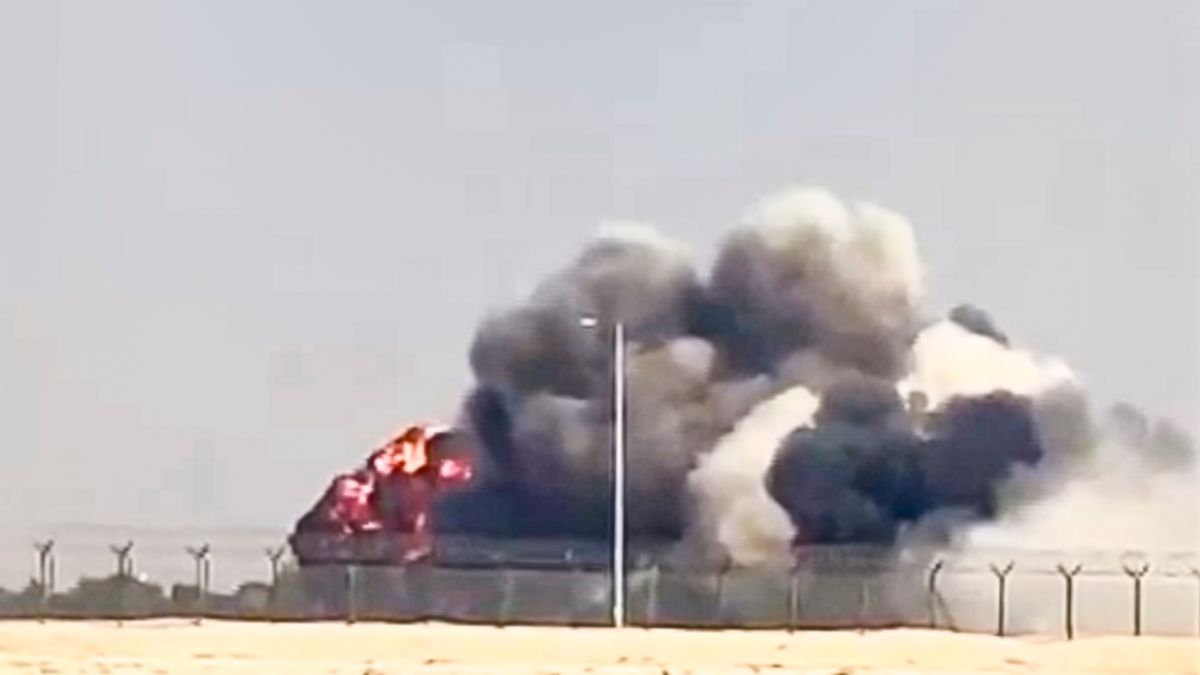An Indian Air Force Tejas fighter jet executing an aerial manoeuvre at the Dubai Airshow suddenly appeared to lose control, plunging to the ground moments later at 2:08 pm local time on Friday. Amid a plume of thick black smoke, the pilot of the aircraft— Wing Commander Namansh Syal —who maintained an almost flawless safety record—was killed, the IAF confirmed. Soon after the crash, several hashtags gained momentum online, amplifying theories about sabotage and external interference.
A fabricated social media post also alleged that an oil leak had been detected on the Tejas before the flight. However, a Press Information Bureau Fact Check dismissed the claim as false, clarifying that the fluid seen in the video formed part of a routine draining process and not a technical malfunction.
Cross-border misinformation and expert caution
A senior official tracking misinformation campaigns said multiple accounts — operating from neighbouring countries — had circulated misleading narratives about the crash. The increased military cooperation between China and Pakistan, particularly in defence technology, has also been repeatedly referenced in online discussions around the incident. Aviation experts, however, cautioned against drawing conclusions before the joint investigation report is released.
“Indian Air Force has full confidence in the aircraft; that is why they are flying it. The only issue is Hindustan Aeronautics Limited’s inability to meet delivery timelines. If we cannot meet our own timelines, how can we export?” said Air Vice Marshal Anil Golani (retired), Director General of the Centre for Air Power Studies. He added that incidents during development or early induction phases are not unusual. “Tejas has had an impeccable record. It was inducted in 2016, and till 2024 not a single incident occurred. Its safety record is excellent.”
On the export prospects of Tejas, he said India must first meet domestic requirements. “Our first priority should be to fulfil our own needs. Indian Air Force has already placed orders for 220 Tejas aircraft. There are many powers in the world trying to pull India down.”
Quick Reads
View AllAccording to the Ministry of Defence, India’s indigenous defence production touched a record Rs 1,27,434 crore in the financial year 2023–24, marking a 174% rise from 2014–15. India now exports military equipment to more than 100 countries, including the United States, France, and Armenia. Defence public sector undertakings accounted for 77% of total output, while the private sector contributed 23%.
Induction delays and pressure on squadron strength
With the retirement of its last MiG-21 squadrons—No. 23 Panthers and No. 3 Cobras—the Indian Air Force’s strength has reduced to 29 fighter squadrons, its lowest since the 1960s, against a sanctioned 42. To cover the shortfall, the force is relying heavily on the phased induction of the Tejas. The aircraft currently serves with No. 45 Flying Daggers and No. 18 Flying Bullets at Sulur, with additional squadrons planned.
The upgraded Tejas Mk-1A, featuring advanced radar, enhanced electronic warfare systems, and improved maintainability, is expected to significantly bolster capability. However, delivery delays continue. In February, Indian Air Force Chief Air Chief Marshal A. P. Singh criticised Hindustan Aeronautics Limited for slipping schedules. “Hungry mouths are ready; we are waiting for the food,” he said, emphasising that the force requires at least 30–40 aircraft every year to sustain optimal squadron strength.
On 17 October, the first Light Combat Aircraft Tejas Mark 1A from the new Nashik production line carried out its maiden flight but is still awaiting induction. Meanwhile, the more advanced Light Combat Aircraft Mk-2 — intended to replace the Mirage-2000, Jaguar, and MiG-29 fleets — remains under development. First conceptualised in 2012, its prototype has faced repeated delays, with production now expected around 2026.
)